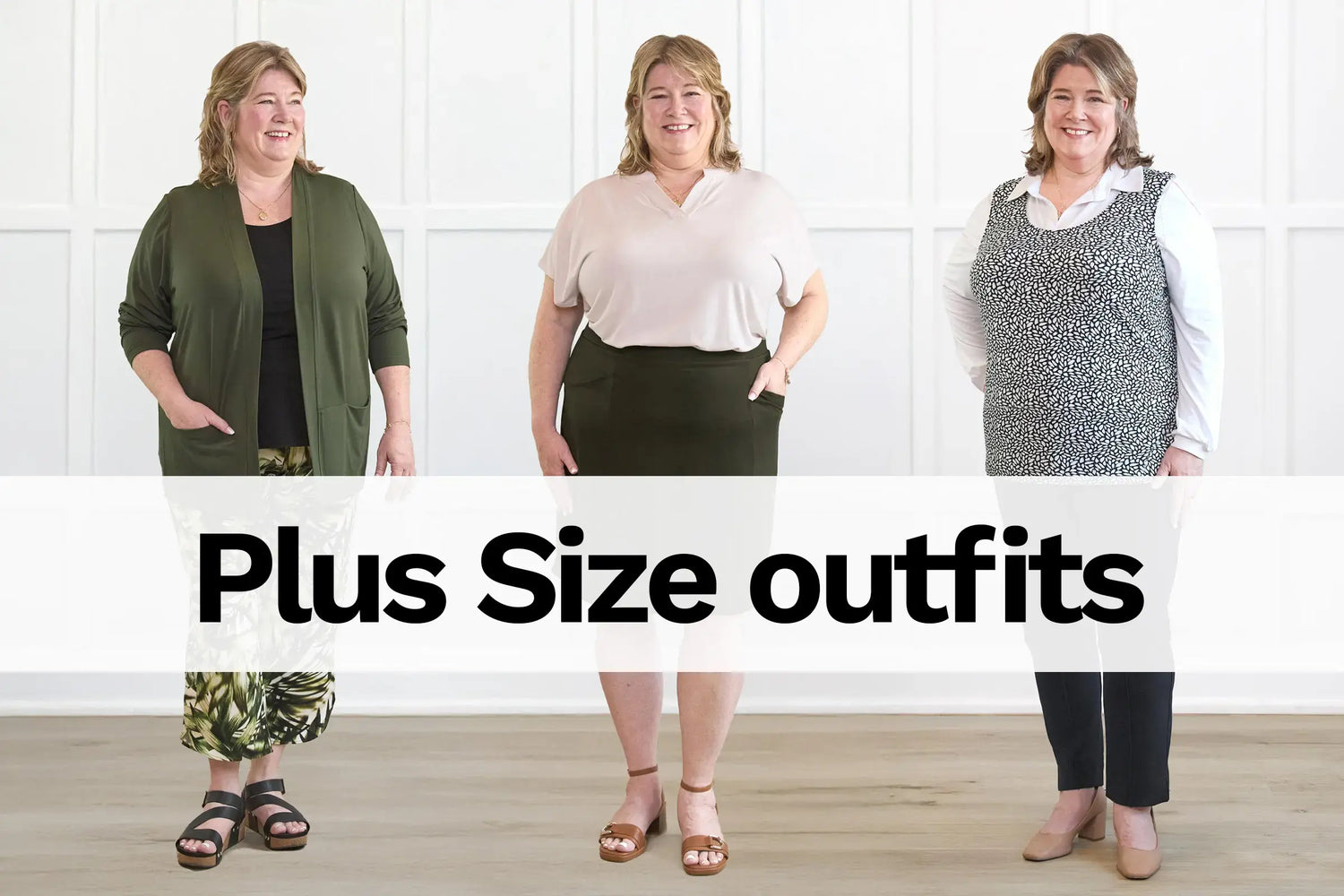Ever wonder what the difference between straight, extended, and plus sizes is? We’re here to spill the beans on the details behind each category. We’ll go over the technical aspects and highlight the key differences that set them apart.

What are straight sizes
Straight sizes refer to sizes small through large for women (sizes 6-14) and they are the most popular ones companies keep in stock. Once a ‘straight size’ pattern is made, they act as the foundation piece, guiding how the fabric is cut and assembled. Think of these patterns as the blueprint that designers use to scale a pattern for different sizes while maintaining the same design and proportions. That process is called grading!
How it works: Typically, a fit model size S or M is used behind the scenes as a live mannequin for designers to see how the fabric falls and how the garment fits on a real human body. From there, they will make adjustments and grade the pattern to fit different sizes and body types.
What are extended sizes
Extended sizes are built based on the straight sizing pattern and refer to sizes XXS, XS, XL and XXL (0-4 AND 16-20). This means that the “base pattern” was adjusted to fit smaller and larger bodies. They will have a similar shape to the straight sizes, with a similar hip-to-waist ratio.
What are plus sizes
Plus sizes, on the other hand, are built from a separate pattern. They have a different hip-to-waist ratio, along with accommodating a fuller bust. Plus size patterns account for how the proportions and body shape change as size increases. The plus sizes are referred to as 2X, 3X, 4X, and so on (22-30).

XXL, 1X and 2X are NOT the same thing
As we learned earlier, XXL is considered an ‘extended size’, and 1X and 2X are considered ‘plus size’. This means they are each made from separate patterns with different proportions. The same goes for XXL/3X and so on.
What’s the difference between XXL and 2XL?
Nothing! They both refer to the same size. It was used as a way to shorten the name, but since plus sizes has become more popular, the abbreviation is not used as often anymore, as it created confusion. So to summarize: XXL = 2XL. But XXL does NOT = 1X or 2X.

Measuring tips to find the right fit
Now that you have a better understanding on what everything means, let’s go over a few tips on how to find your measurements. But first, you’ll need a soft measuring tape. If you don’t have one, you can print one here.
CHEST/BUST:
While measuring, wear the bra you typically like to wear under your clothes (or no bra, if that's your preference!). Stand up straight and wrap the tape under your arms and across your back, over the fullest part of your chest. Make sure the tape is lying flat and isn't twisted. Breathe normally, noticing the variations as you breathe and record the highest number in inches or centimetres.
WAIST:
Wear a fitted shirt while you measure. Measure the smallest part between your hips and your bust. Usually, this will be about 2-3 inches above your belly button. Make sure the tape is lying flat and isn't twisted. Take a breath out and then rest the tape against your skin, but do not pull tight while you record the number.
HIP:
Wear more fitted clothing, like leggings, as you measure. Measure the widest point of your hips, including your tummy and derriere as you wrap around. Make sure the tape is lying flat and isn't twisted. Rest the tape comfortably against your skin and don’t pull tight when you record the number.
INSEAM:
At Miik, our inseam measurements reflect the measurement from the pubis to the ankle bone (not to the floor, like some inseam measurements). Measure from the inside of your leg, from your crotch to your ankle bone while you stand up straight, knees unbent, feet slightly parted in a natural stance. You may need help with this one – hold the top of the tape under your crotch while a friend holds the other end at your ankle bone and records the measurement from there.

If your measurements are all over the place, consider picking one that matches at least two-thirds of your measurements. Bottom-heavy individuals should focus more on the hips and waist, while top-heavy individuals should focus on the bust and waist.
When in doubt, always opt for the larger size as it’s easier to remove excess fabric than to add to something that isn’t there.
Need help finding your Miik size? Check out our Visual size guide for more info and spot a Miik model who shares your fabulous look!

How we designed our plus size collection
At Miik, we spent over a year learning and working to create our plus size line + get the fit as close to perfect as possible. We consulted plus size brand experts, hired a plus size fit model, and utilized the many years of plus size expertise of our pattern maker and production manager to create, re-work, and perfect the patterns of each style.
Watch our founder Donna interview our fit model Kelly about the process!
Every body deserves to have clothing that makes them feel comfortable, confident, and supported. So, whether you're rocking straight, extended, or plus sizes, remember: your style is an expression of your beautiful self. Own it, love it, and let your wardrobe reflect the unique and incredible person you are. Stay fabulous, and never forget – you're stunning just the way you are!
With much love,
Your Miik team 🤍






